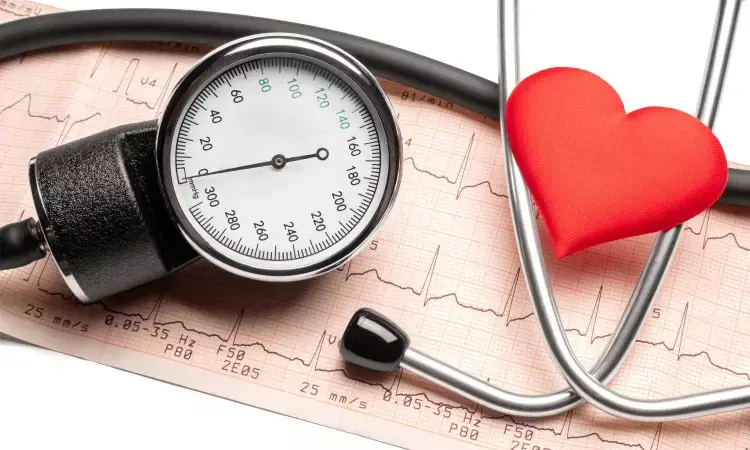- Home
- Medical news & Guidelines
- Anesthesiology
- Cardiology and CTVS
- Critical Care
- Dentistry
- Dermatology
- Diabetes and Endocrinology
- ENT
- Gastroenterology
- Medicine
- Nephrology
- Neurology
- Obstretics-Gynaecology
- Oncology
- Ophthalmology
- Orthopaedics
- Pediatrics-Neonatology
- Psychiatry
- Pulmonology
- Radiology
- Surgery
- Urology
- Laboratory Medicine
- Diet
- Nursing
- Paramedical
- Physiotherapy
- Health news
- Fact Check
- Bone Health Fact Check
- Brain Health Fact Check
- Cancer Related Fact Check
- Child Care Fact Check
- Dental and oral health fact check
- Diabetes and metabolic health fact check
- Diet and Nutrition Fact Check
- Eye and ENT Care Fact Check
- Fitness fact check
- Gut health fact check
- Heart health fact check
- Kidney health fact check
- Medical education fact check
- Men's health fact check
- Respiratory fact check
- Skin and hair care fact check
- Vaccine and Immunization fact check
- Women's health fact check
- AYUSH
- State News
- Andaman and Nicobar Islands
- Andhra Pradesh
- Arunachal Pradesh
- Assam
- Bihar
- Chandigarh
- Chattisgarh
- Dadra and Nagar Haveli
- Daman and Diu
- Delhi
- Goa
- Gujarat
- Haryana
- Himachal Pradesh
- Jammu & Kashmir
- Jharkhand
- Karnataka
- Kerala
- Ladakh
- Lakshadweep
- Madhya Pradesh
- Maharashtra
- Manipur
- Meghalaya
- Mizoram
- Nagaland
- Odisha
- Puducherry
- Punjab
- Rajasthan
- Sikkim
- Tamil Nadu
- Telangana
- Tripura
- Uttar Pradesh
- Uttrakhand
- West Bengal
- Medical Education
- Industry
Reduced ventilatory efficiency encountered in patients with hypertension during exercise

UK: A recent study has found a higher minute ventilation/volume of expired CO2 slope (ventilatory efficiency) in patients with primary hypertension (including patients with treated controlled blood pressure) without a diagnosis of heart failure compared to healthy controls.
Ventilatory efficiency is evaluated via the relationship between ventilation and carbon dioxide production (minute ventilation/volume of expired CO2 [VE/VCO2]) during incremental exercise. It is a noninvasive measure shown to reflect exercise indexes, such as pulmonary artery wedge pressure and cardiac output, that are normally obtained by invasive means.
The findings, published in the Journal of the American Heart Association could signify early cardiac dysfunction and/or increased cardiac risk.
An elevated ventilatory efficiency slope during exercise is reported to be a strong prognostic indicator in heart failure. It is elevated in patients with heart failure with preserved ejection, majority of them have hypertension. However, it is not known whether r the VE/VCO2 slope is also elevated in people with primary hypertension compared to normotensive individuals. Katrina Hope, University of Bristol, Bristol, United Kingdom, and colleagues hypothesized that there is a spectrum of ventilatory inefficiency in cardiovascular disease, indicating an increasingly abnormal physiological response to exercise. They aimed to evaluate the VE/VCO2 slope in hypertension patients compared with peak oxygen consumption–, age‐, and sex‐matched healthy subjects.
The study included 55 patients with primary hypertension and 24 normotensive controls. Ramped cardiovascular pulmonary exercise tests to peak oxygen consumption were completed on a bike ergometer in these patients. The VE/VCO2 slope was evaluated from the exercise onset to peak oxygen consumption. Data comparison was done using unpaired Student t test.
The study led to the following findings:
- Age (mean±SD, 66±6 versus 64±6 years), body mass index (25.4±3.5 versus 24±2.4 kg/m2), and peak oxygen consumption (23.2±6.6 versus 24±7.3 mL/min per kg) were similar between groups.
- The VE/VCO2 slope was elevated in the hypertensive group versus controls (31.8±4.5 versus 28.4±3.4).
- Only 27% of the hypertensive group were classified as having a normal VE/VCO2 slope versus 71% in the control group.
"In our cohort of participants, we show that hypertension patients have lower ventilatory efficiency compared to normotensive controls, as measured by VE/VCO2 slope," the researchers wrote. "This reproducible, noninvasive measure may guide decision‐making and risk stratification with regard to antihypertensive treatment and prevention of cardiac events and HFpEF."
"Future research is required to establish the exact mechanisms underlying the reduced ventilatory efficiency in hypertension, whether this is predictive of subsequent of future cardiovascular‐related hospitalization or HFpEF," they cooncluded.
Reference:
Hope K, Chant B, Hinton T, Kendrick AH, Nightingale AK, Paton JFR, Hart EC. Ventilatory Efficiency Is Reduced in People With Hypertension During Exercise. J Am Heart Assoc. 2023 Jul 4;12(13):e024335. doi: 10.1161/JAHA.121.024335. Epub 2023 Jun 22. PMID: 37345800.
Dr Kamal Kant Kohli-MBBS, DTCD- a chest specialist with more than 30 years of practice and a flair for writing clinical articles, Dr Kamal Kant Kohli joined Medical Dialogues as a Chief Editor of Medical News. Besides writing articles, as an editor, he proofreads and verifies all the medical content published on Medical Dialogues including those coming from journals, studies,medical conferences,guidelines etc. Email: drkohli@medicaldialogues.in. Contact no. 011-43720751


